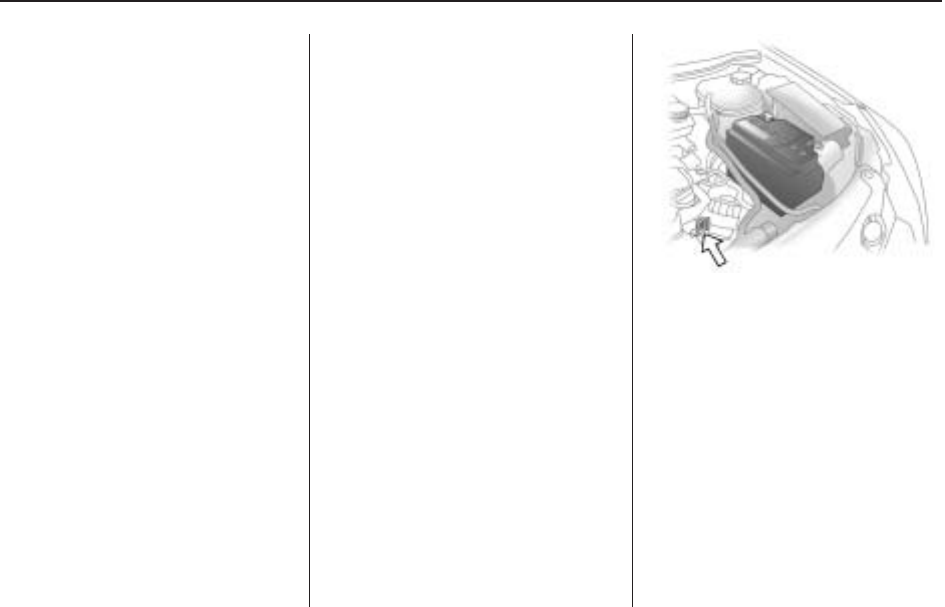
5. Check that the jumper cables do
not have loose or missing
insulation. If they do, you could
get a shock. The vehicles
could be damaged too.
Before you connect the cables,
here are some things you to
know. Positive (+) will go
to positive (+) or to a remote
positive (+) terminal if the vehicle
has one. Negative (−) will go
to the engine lift hook.
Do not connect positive (+) to
negative (−) or you will get
a short that would damage the
battery and maybe other parts
too. And do not connect the
negative (−) cable to the
negative (−) terminal on the
dead battery because this can
cause sparks.
6. Connect the red positive (+)
cable to the positive (+) terminal
of the dead battery. Use a
remote positive (+) terminal if
the vehicle has one.
7. Do not let the other end touch
metal. Connect it to the
positive (+) terminal of the good
battery. Use a remote positive (+)
terminal if the vehicle has one.
8. Now connect the black
negative (−) cable to the
negative (−) terminal of the
good battery. Use a remote
negative (−) terminal if the vehicle
has one.
Do not let the other end touch
anything until the next step.
The other end of the negative (−)
cable does not go to the dead
battery.
9. Connect the other end of the
negative (−) cable at least
18 inches (45 cm) away from
the dead battery, but not
near engine parts that move.
Connect it to the engine lift hook.
You may need to scrape the
surface with your jumper cable
to obtain a proper ground.
The electrical connection is just
as good there, and the chance
of sparks getting back to the
battery is much less.
9-70 Vehicle Service and Care


















